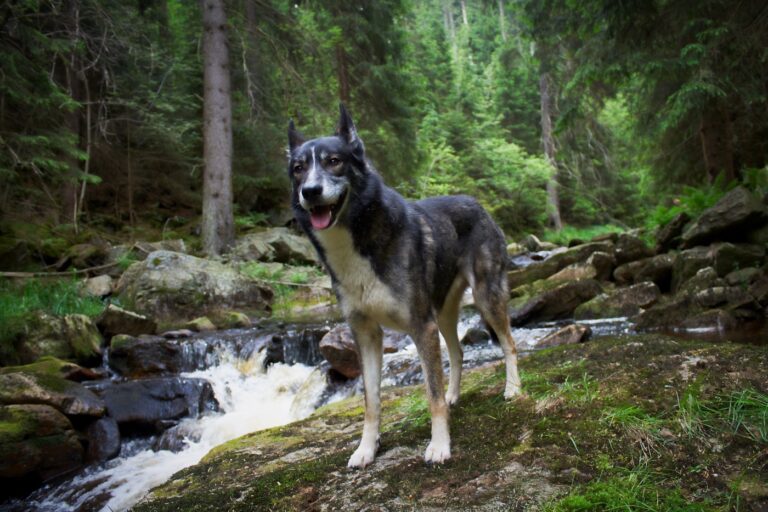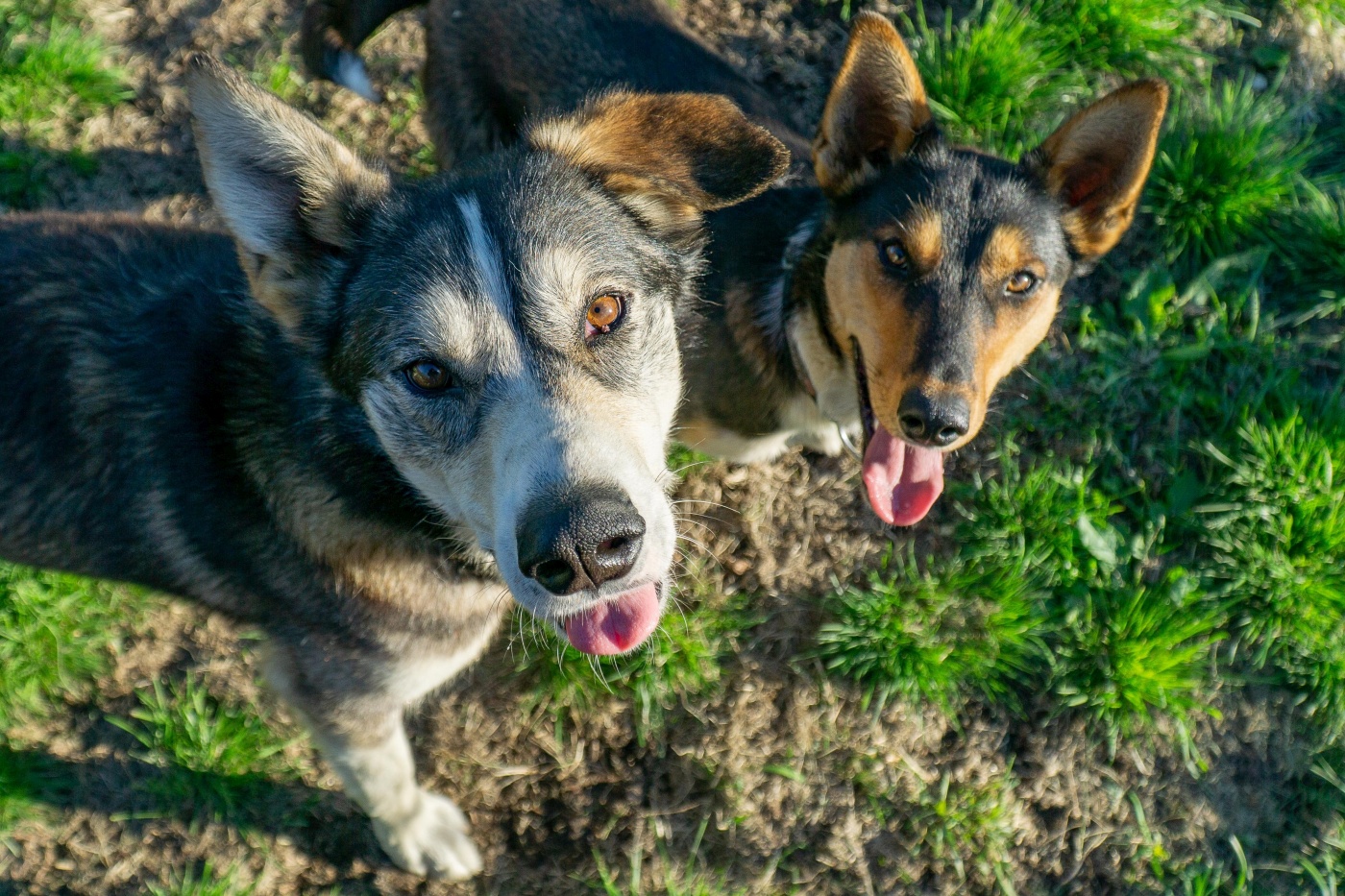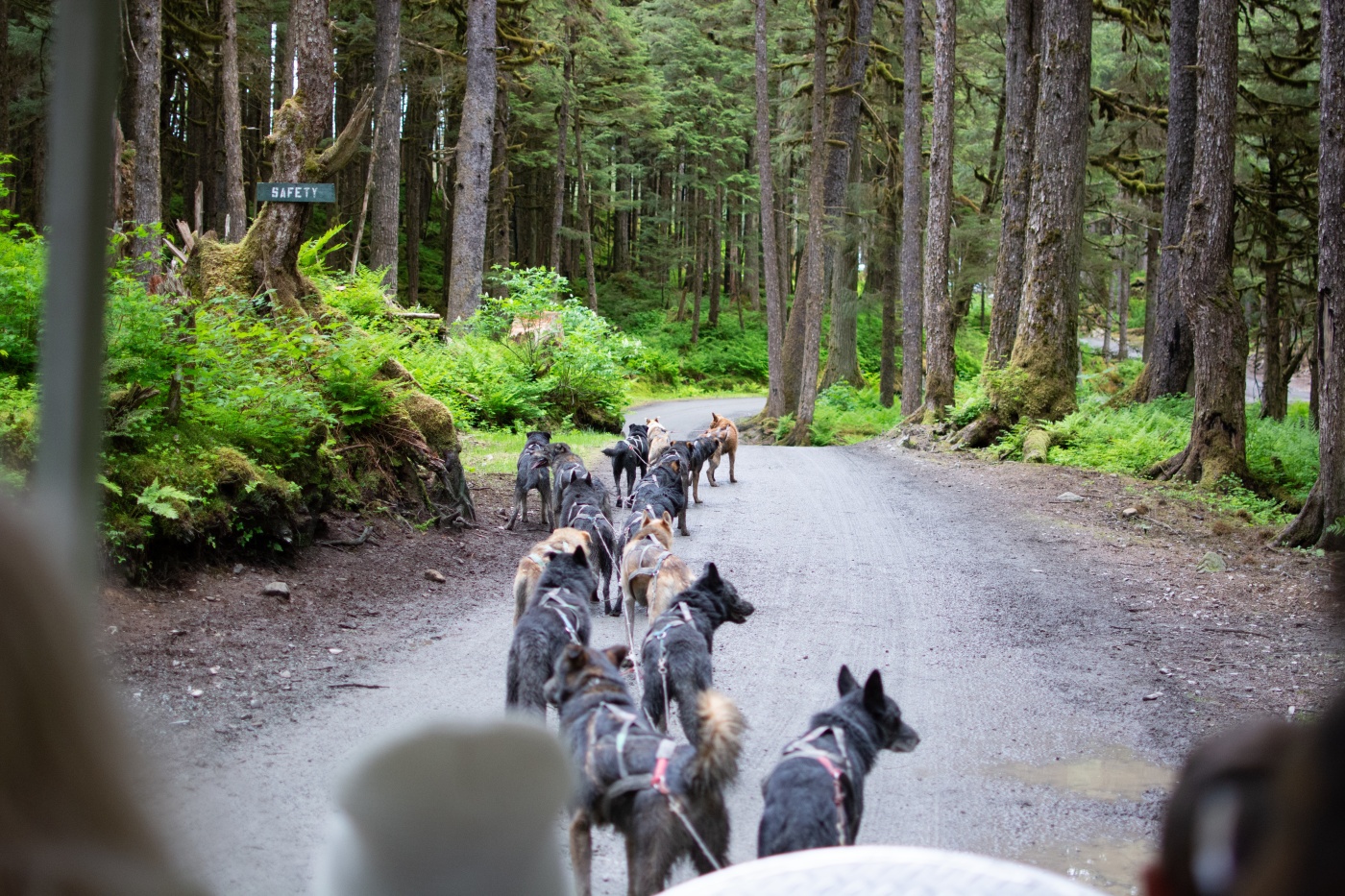Beagle
The Beagle's short legs can be deceiving – this medium-sized dog keeps you on your toes and is always full of surprises! This friendly breed is active, fearless and extremely clever.
In contrast to its pedigree relatives, the Alaskan Husky was frowned upon amongst sledge dogs for a long time. However, the image of this hybrid has improved – with good reason. Read here how the Alaskan Husky has gained recognition despite not being an official dog breed.

© eowyny / stock.adobe.com
At first glance, the Alaskan Husky often can't be recognised as a typical Husky.
With the name Husky, most dog lovers think of round blue eyes and tousled black-and-white fur. However, the Alaskan Husky generally doesn’t fully meet these widespread expectations. Due to its origin from various crossbreeds, the Alaskan Husky is extremely versatile.
Whilst most Alaskans have blue eyes, there are some with brown eyes. You can also choose between dogs with prick or lop ears.
 © AnnKristin / stock.adobe.com
© AnnKristin / stock.adobe.com
Alaskan Huskies generally reach a shoulder height of 50 to 60 centimetres. There are some dogs with an athletic physique weighing less than 20 kilograms. In contrast, others fit the more typical image of a Husky and reach up to 50 kilograms in weight.
Sex also determines a dog’s size, with males usually bigger than more petite females.
You can also expect great variety in terms of the colour of Alaskan Huskies. You can find brown, white, black or agouti dogs.
In contrast to the Siberian Husky, the Alaskan Husky doesn’t usually have a typical white facial mask. The fur of this special lineage is also slightly finer, but is sufficient for cold snowy days.
Thanks to its tolerance and modesty towards humans, an Alaskan Husky is suitable for both sporty singletons and families with children. It goes without saying that they should be old enough to understand how to treat animals with respect.
However, you as the adult should take the lead on walks. Running rabbits or deer can often make these friendly dogs with a strong hunting instinct take off like a rocket. Since poaching or chasing free-roaming dogs is a punishable offence and not least induces sheer terror in wild animals, you as a dog owner should have sufficient strength to keep this heavy dog breed on its lead.
In order to avoid such situations, you should of course also rely on good dog training. The good thing is that although the Alaskan Husky is sometimes stubborn, it is intelligent. It loves its pack and is happy to accept newcomers. Hence, it doesn’t make a good watchdog.
Rule number 1 is that Huskies are active and curious dogs. They want action and aren’t made to spend long periods inside your home waiting for you to finish work. Short walks aren’t sufficient for these active canines and they get bored quickly.
Sadly it’s no rarity for overwhelmed Husky owners to give up or even abandon their new canine shortly after buying or adopting it. Hence, you should definitely want to spend enough time together and be very keen on exercise.
The Alaskan Husky has plenty of stamina. As a dog owner, you should possess this trait too, because like all Husky species, the Alaskan will soon become unhappy without sport.
For the Alaskan Husky, dog sled racing is a particularly relevant option, although it of course isn’t suited to all people.
As an alternative, you can try out the following types of dog sport:
Cycling, jogging or hiking together are also sporting activities you can do along with your dog. Basically the most important that thing is that both you and your tenacious dog enjoy your shared hobby.
 © ric Mitchell Photos / stock.adobe.com
© ric Mitchell Photos / stock.adobe.com
The fur of Huskies also takes care of itself. You just need to support your dog with grooming if it is very dirty after muddy rainy days or during the moulting period.
A brush or comb is generally sufficient. Only give your Husky a bath in very isolated cases – and only then with a special dog shampoo.
The Alaskan Husky is considered very robust. The same rules apply as with other pets: Species-appropriate housing and feeding ensure good health.
Whilst fitness too plays a major role for the Alaskan Husky, you shouldn’t go over the top, because excess strain on the joints can cause arthrosis, a painful joint degeneration for your dog. In order to protect your dog from this, you should start trainings slowly and always adapt it to your dog’s condition.
In addition, there is a hereditary disease that affects Alaskan Huskies from time to time. This already leads to central nervous system disorders in puppies. This is called Alaskan Husky Encephalopathy (AHE).
Affected dogs suffer from seizures, are blind and have coordination disorders. Lameness or changes in behaviour may also occur. It’s not uncommon for this disease to prove fatal for affected dogs.
The trigger of this genetic defect is a monogenic, autosomal recessive mutation. It’s possible that the parent animals show no visible signs but transmit the disease to their offspring. As a result, breeding examinations as well as the preparation of family trees are very important.
An Alaskan Husky reaches on average 14 years of age. This is a relatively high life expectancy for a dog of its size.
Anyone who does a lot of exercise gets very hungry. So after a sporty day, your Alaskan deserves high-quality food that sufficiently covers its high requirements.
Your dog’s taste determines whether this will be wet food or dry food. In general, you should pay attention to your dog’s age and general condition when choosing a dog food.
BARF (biologically appropriate raw food) is particularly popular with some Husky owners. However, this special diet requires a great deal of specialist knowledge, time and hygiene standards. Before opting for a change in diet, you should get your vet’s approval in advance.
In any case, your dog must have access to fresh drinking water at all times.
Find dog food for all ages and other accessories at zooplus.
As early as 4,000 years ago, peoples living in North America or Siberia used breeds such as the Samoyed or Siberian Husky as sled dogs. They helped people as hauling and pack animals during hunts.
The Alaskan Husky emerged when dog breeders in North America paired original Huskies with sighthounds and hunting dogs. It shouldn’t be mistaken for the Alaskan Malamute.
In contrast to its ancestors, the Alaskan Husky isn’t a standardised dog breed. Instead, it is a type of dog developed from other dogs.
Huskies are very popular dogs due to their beauty, but unfortunately, this quality doesn’t benefit all Huskies. As an interested party, you can soon fall victim to dubious traders who sell sick puppies on the street or from cars.
It’s important that you look into reputable breeders before making a purchase in order to put an end to this. Some animal homes or animal welfare organisations regularly rehome Huskies that have become homeless.
An Alaskan Husky puppy costs at least 1,000 euros if you go to a reputable breeder. The price of an older dog is usually based on different factors, such as age or colouring. In contrast, you can usually get older dogs from an animal shelter for a low nominal fee.
However, don’t forget that you will face further costs when buying a dog. This doesn’t just include the costs for basic equipment (e.g. food bowl), but ongoing costs for dog food, vaccinations and veterinary examinations.
Although an Alaskan Husky is a very good family dog, it demands plenty of your time and attention – especially compared to less active dogs like the English Bulldog. If you are aware of this and enjoy adventures with your canine friend, an Alaskan Husky is made for you.
The Beagle's short legs can be deceiving – this medium-sized dog keeps you on your toes and is always full of surprises! This friendly breed is active, fearless and extremely clever.
The Golden Retriever is still one of the most popular dog breeds, especially with families. It is defined not just by its docility, but shows numerous other qualities too. Read in the following article everything you need to know about the Golden Retriever.
The German Shepherd is one of the most popular utility dog breeds in the world, though the willing-to-learn and people-focused nature of these versatile dogs also makes them suitable for family life.